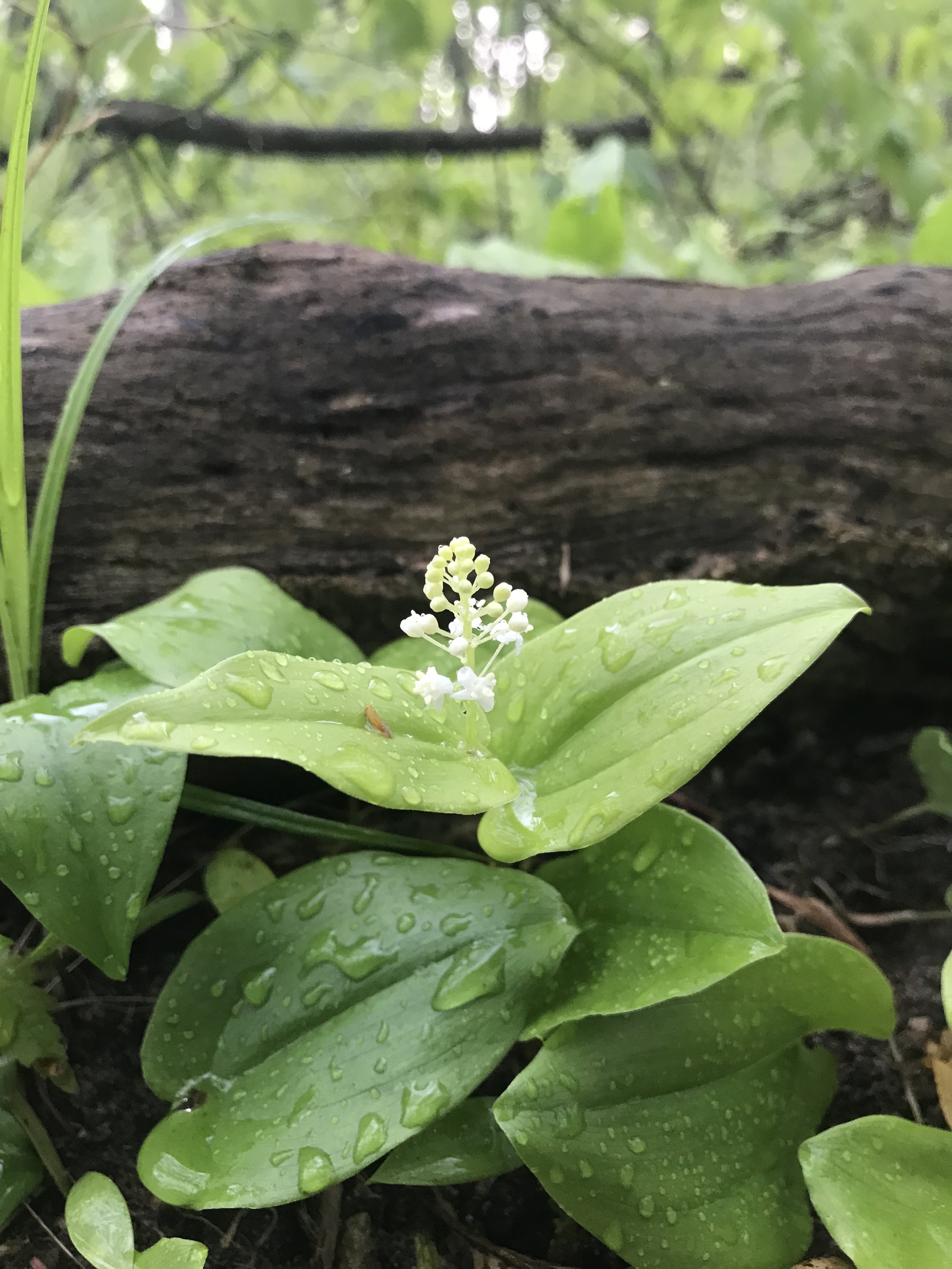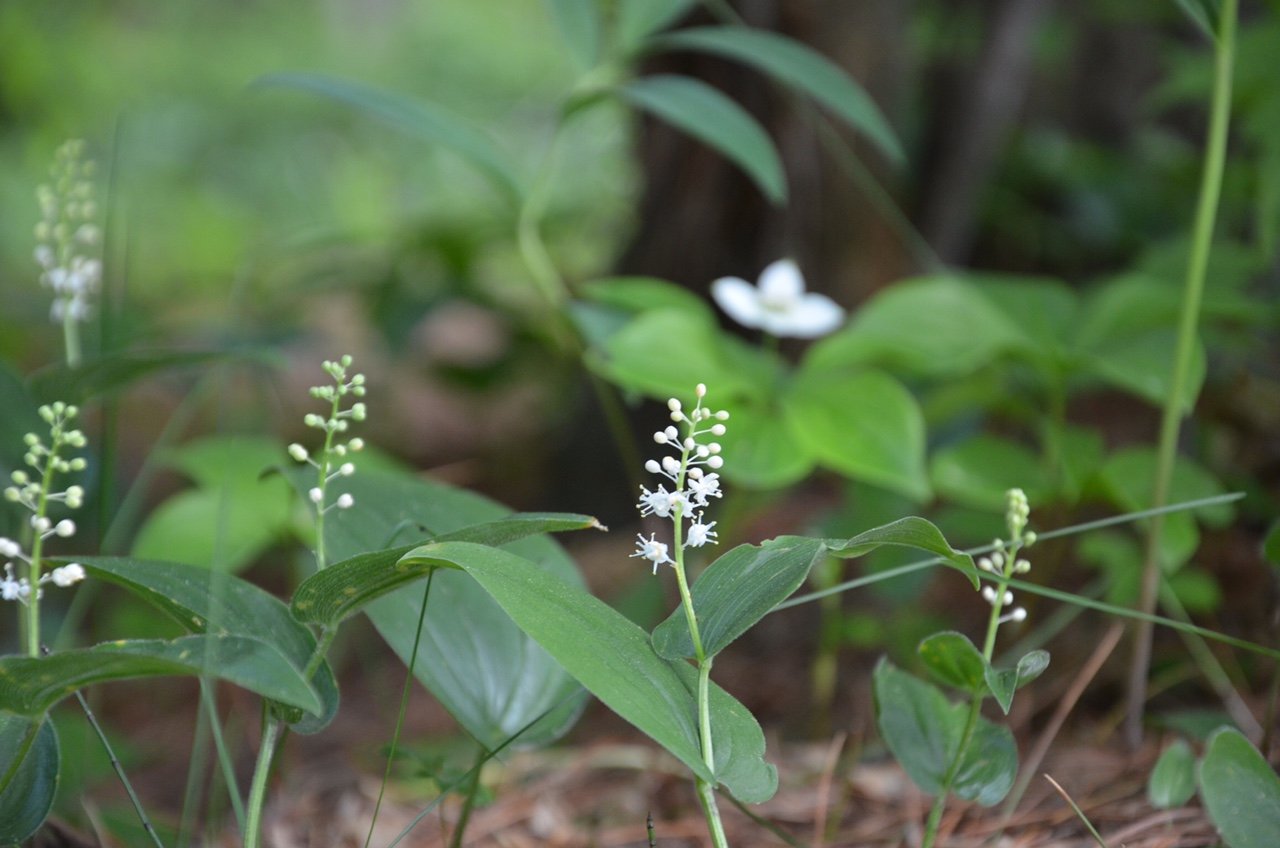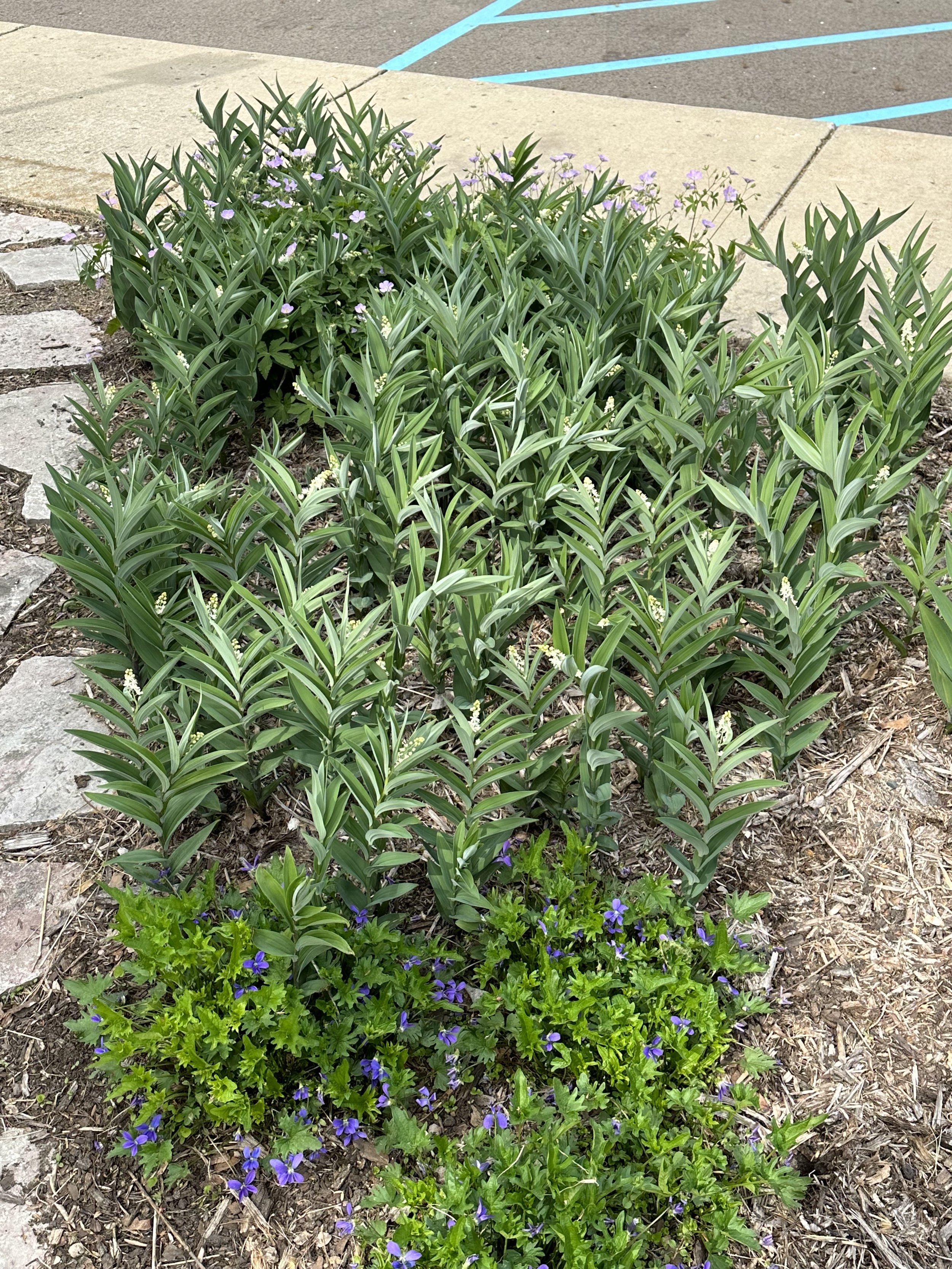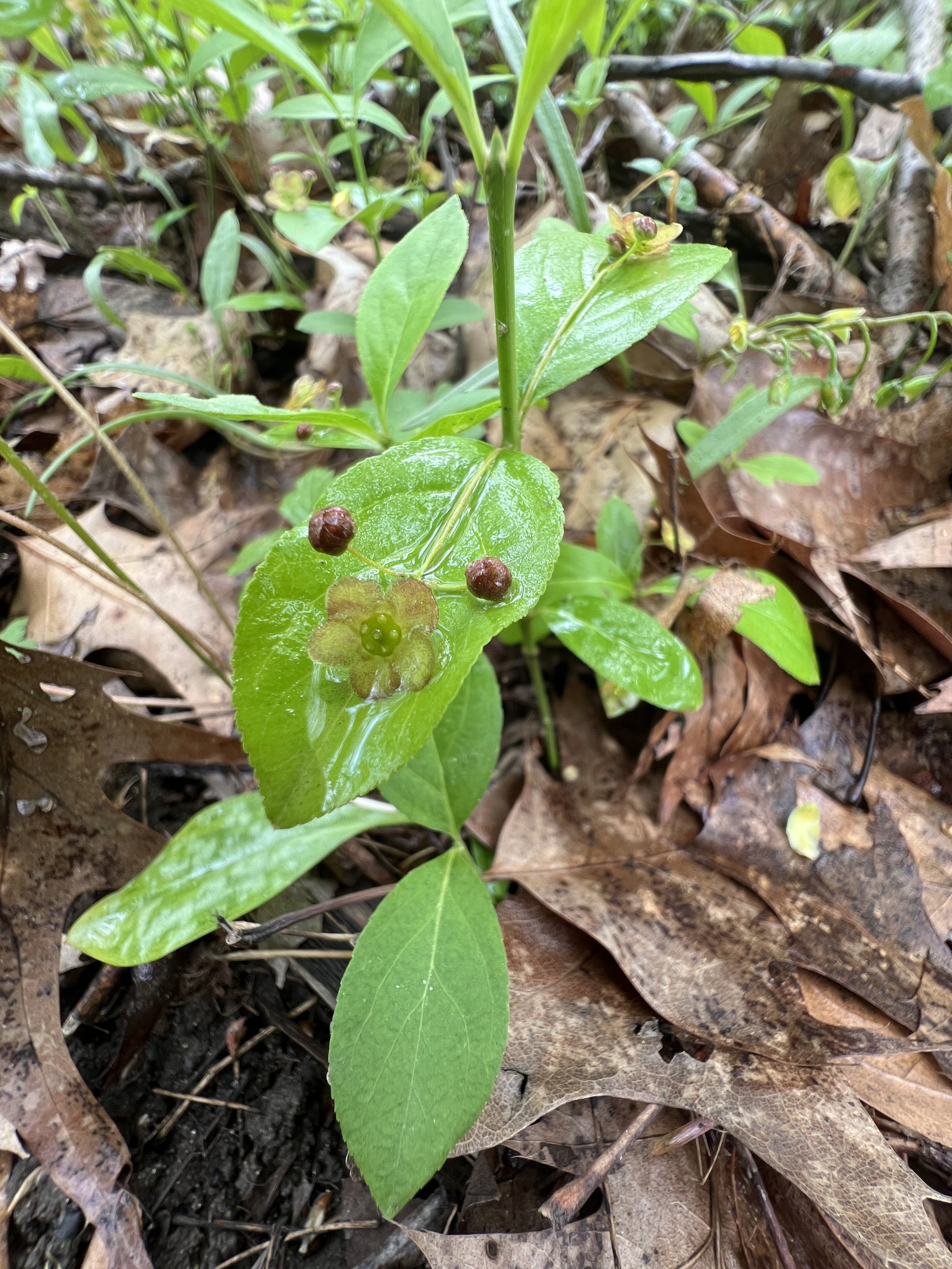Solomon's Seal (Polygonatum biflorum)
Solomon’s Seal is a woodland plant that can be found in moist woods. It can also be found in drier areas like oak-hickory forests. It has long oval-shaped leaves with rounded tips that alternate up the stem. Flowers can be seen by looking below the leaves where they hang from short stems in groups of three to seven.
Solomon’s Seal attracts bees and flies to its flowers for both pollen and nectar and ruby-throated hummingbirds visit the flowers as well. Once pollinated, ovaries develop into berries. Berries are first green and then dark purple. Woodland birds will eat the berries, dispersing the seeds.
Solomon’s Seal grows in the woods and along woodland edges. The leaves are present throughout the summer and only begin to degrade in the fall.
Solomon’s Seal needs more study. Plants, unlike humans, can have more than two copies of genes. There is a plant known by some as Giant Solomon’s Seal that can grow to six feet tall. It is likely a variety of this species. Michigan Flora treats Polygonatum biflorum as a highly variable species that can be 12 inches tall up to 4 feet tall. See the note below for a summary of Illinois Wildflower’s treatment of this complex. We sell both a tall version and the shorter version under the name Polygonatum biflorum, but will be separating these out in coming years to avoid confusion.
Solomon’s Seal (Polygonatum biflorum)
Michigan Flora reference page for state distribution: Solomon’s Seal
height: 12 inches to 4 feet
bloom time: May, June
soil: medium-dry, rich
sun: full, partial, shade
flower: greenish-yellow (berries: purple)
life cycle: perennial
family: Convallariaceae
Solomon’s Seal is a woodland plant that can be found in moist woods. It can also be found in drier areas like oak-hickory forests. It has long oval-shaped leaves with rounded tips that alternate up the stem. Flowers can be seen by looking below the leaves where they hang from short stems in groups of three to seven.
Solomon’s Seal attracts bees and flies to its flowers for both pollen and nectar and ruby-throated hummingbirds visit the flowers as well. Once pollinated, ovaries develop into berries. Berries are first green and then dark purple. Woodland birds will eat the berries, dispersing the seeds.
Solomon’s Seal grows in the woods and along woodland edges. The leaves are present throughout the summer and only begin to degrade in the fall.
Solomon’s Seal needs more study. Plants, unlike humans, can have more than two copies of genes. There is a plant known by some as Giant Solomon’s Seal that can grow to six feet tall. It is likely a variety of this species. Michigan Flora treats Polygonatum biflorum as a highly variable species that can be 12 inches tall up to 4 feet tall. See the note below for a summary of Illinois Wildflower’s treatment of this complex. We sell both a tall version and the shorter version under the name Polygonatum biflorum, but will be separating these out in coming years to avoid confusion.
Solomon’s Seal (Polygonatum biflorum)
Michigan Flora reference page for state distribution: Solomon’s Seal
height: 12 inches to 4 feet
bloom time: May, June
soil: medium-dry, rich
sun: full, partial, shade
flower: greenish-yellow (berries: purple)
life cycle: perennial
family: Convallariaceae
Solomon’s Seal is a woodland plant that can be found in moist woods. It can also be found in drier areas like oak-hickory forests. It has long oval-shaped leaves with rounded tips that alternate up the stem. Flowers can be seen by looking below the leaves where they hang from short stems in groups of three to seven.
Solomon’s Seal attracts bees and flies to its flowers for both pollen and nectar and ruby-throated hummingbirds visit the flowers as well. Once pollinated, ovaries develop into berries. Berries are first green and then dark purple. Woodland birds will eat the berries, dispersing the seeds.
Solomon’s Seal grows in the woods and along woodland edges. The leaves are present throughout the summer and only begin to degrade in the fall.
Solomon’s Seal needs more study. Plants, unlike humans, can have more than two copies of genes. There is a plant known by some as Giant Solomon’s Seal that can grow to six feet tall. It is likely a variety of this species. Michigan Flora treats Polygonatum biflorum as a highly variable species that can be 12 inches tall up to 4 feet tall. See the note below for a summary of Illinois Wildflower’s treatment of this complex. We sell both a tall version and the shorter version under the name Polygonatum biflorum, but will be separating these out in coming years to avoid confusion.
Solomon’s Seal (Polygonatum biflorum)
Michigan Flora reference page for state distribution: Solomon’s Seal
height: 12 inches to 4 feet
bloom time: May, June
soil: medium-dry, rich
sun: full, partial, shade
flower: greenish-yellow (berries: purple)
life cycle: perennial
family: Convallariaceae
Illinois Wildflowers uses different terminology for the Solomon’s seal plants. Polygonatum biflorum is a plant that grows to four feet tall. Polygonatum commutatum is the smaller version & a plant called Giant Solomon’s seal is a polypoid variety that can grow to six feet tall. It can be very confusing to talk about these plants since more study needs to be done. People who have seen the giant plants go searching to find out what species it is and different websites treat them in different ways.












































